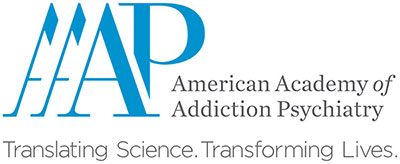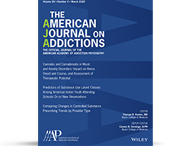Cultivating Justice and Medicine Collaboration to Address Public Health and Public Safety Priorities
The Substance Abuse and Mental Health Services Administration (SAMHSA)-funded Opioid Response Network (ORN), led by the American Academy of Addiction Psychiatry (AAAP), has just released a comprehensive, educational resource guide for judges and other justice-system stakeholders. Available at no cost, the guide provides a foundational level understanding of the medical aspects of evidence-based practices needed in the prevention, identification and treatment of substance use disorders for individuals involved with the justice system.
“While being charged with maintaining the law, keeping communities safe, reducing recidivism and costs for the justice system, judges, like health professionals, are also on the front lines of addressing the increasing opioid overdose crisis and the rising rates of stimulant use,” said Kathryn Cates-Wessel, CEO, AAAP and ORN Principal Investigator. “This resource guide was created to fill a critical gap in an understanding of the medical aspects of substance use disorders and co-occurring psychiatric disorders.”
“The resource guide, along with its valuable citations, will equip those of us who labor at the intersection of behavioral health disorders and the justice system with training materials for our stakeholders and evidence to inform policy makers to effectively advocate for the policies and resources that we need to maximize our opportunities to improve public health and safety,” said Hon. Duane Slone, Judge, Fourth Judicial District, TN. “I am so grateful to everyone who worked so hard to put this together.”
Cultivating Law and Medicine Partnerships to Support Justice-Involved Individuals with Substance Use Disorders is available to any judge and staff in the justice/legal system–at no cost. Funded by the ORN, the guide was developed in partnership with leadership from the National Judicial Opioid Task Force, a working committee of key judicial leaders working with AAAP addiction psychiatrists, the Conference of Chief Justices and the Conference of State Court Administrators.
“Substance use disorders are seen across all aspects of the legal system from police and sheriffs, by courts, in probation and parole settings and in jails; and data shows us that incarceration in the United States correlates strongly with drug-related offenses,” said J.D. Gingerich, Director, State Courts Partnership, William H. Bowen School of Law and National Center for State Courts. “Collaboration between justice and medical professionals to address the stigma associated with substance use disorders and identify the evidence-based practices needed is vital to supporting healthy individuals, families and communities.”
THE FACTS
- Estimates suggest that adult offenders have rates of substance use disorder that are more than 4x that of the general population (National Institute on Drug Abuse, 2017).
- In juvenile justice settings, it is estimated that 50-75% of juveniles were under the influence of drugs or alcohol at the time of their offense (National Institute on Drug Abuse, 2017).
- Research shows that evidence-based treatment can significantly decrease drug problems, crime and criminal recidivism while improving health (Chandler, et. al, 2008).
- The yearly economic cost of the opioid crisis is $504 Billion. These losses arise from healthcare spending, criminal justice costs and lost productivity (Council of Economic Advisors, 2019).
Content from this justice resource guide is, in part, building off earlier work from the Physicians and Lawyers for National Drug Policy at Brown University Center for Alcohol and Addiction Studies and a three-day training held in November 2019 at The National Judicial College in Reno, NV, with 46 state champion judges, appointed by their Chief Justices, and addiction psychiatrists from AAAP. An online course modeled after this training will also be available Summer 2021 at no cost. To access the guide, visit: https://www.aaap.org/education/law-andmedicine-guide/. A limited number of printed copies of the resource guide will also be available. Contact [email protected] for copies.



